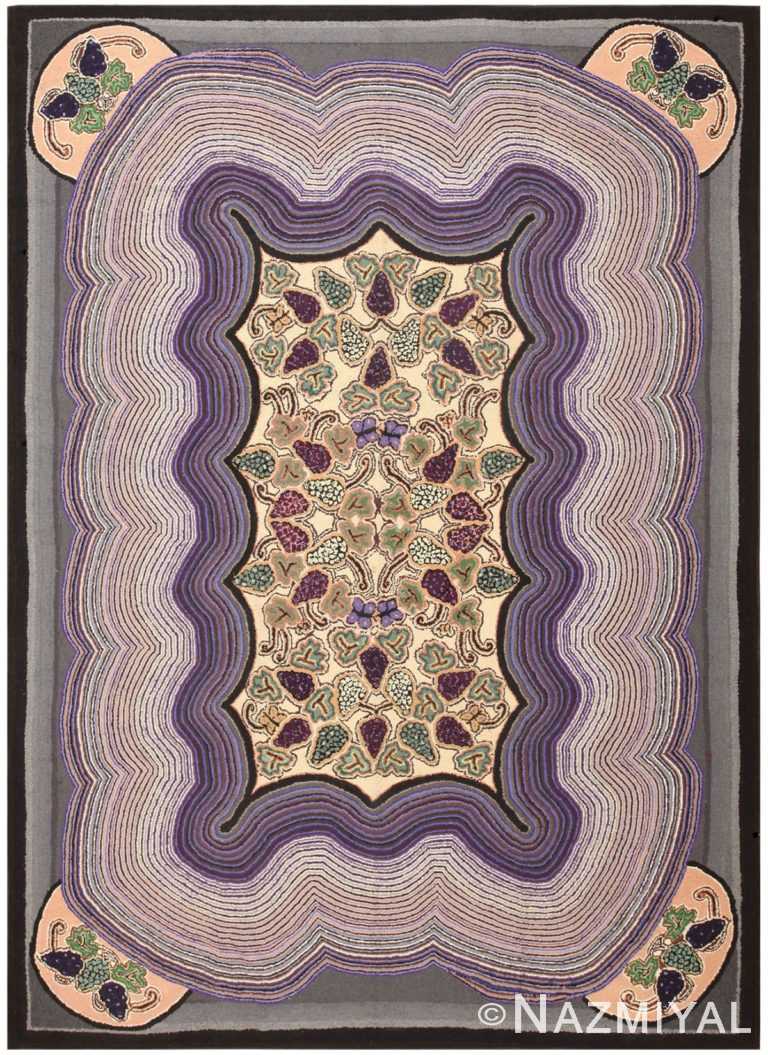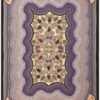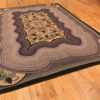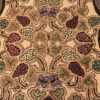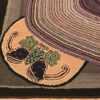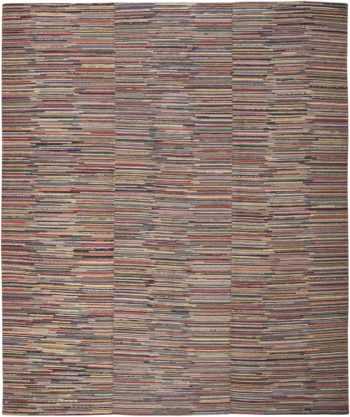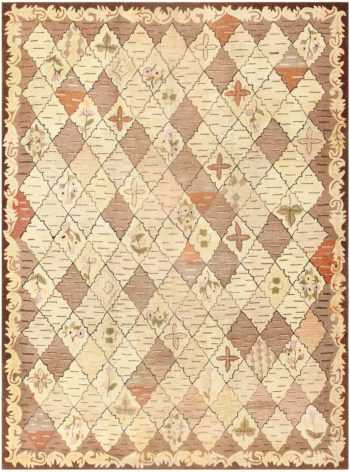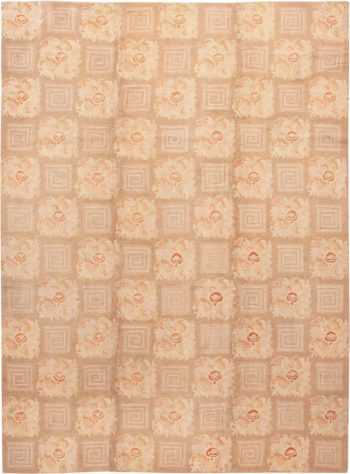Purple Antique Room Size American Hooked Rug 50302
A Rare And Captivating Purple Antique Room Size American Hooked Rug, Country of Origin: United States, Circa 1920 — Whimsy and dreamlike loveliness define this stunning American carpet. Handwoven using the traditional hooked rug technique, this generously sized piece begins with a stark black border that swiftly cedes to a broad inner border of storm grey. Each of the piece’s four corners feature vivid designs against a muted peach background. These artistic flourishes frame the dramatic heart of the piece. A complex design comprised of lavender, purple, grey, and black frame a soft yellow field overlaid with a fascinating abstract pattern of purple and green. The design boasts flawless symmetry and a unique organic geometry. Bold and stunning, this enthralling antique carpet ensures a peerless statement piece.
American rug hooking is a textile art form that has its origins in England in the early 19th century. It began when workers in weaving mills were permitted to collect the short scraps of yarn leftover from the weaving process. The weavers took them home and pulled them through a backing of burlap, linen, or canvas, to create rugs, chair seats, pillows, and other items for the home.
The history of the craft in the USA began around 1830 when factories began to produce machine made floor coverings. Its origins are primarily utilitarian, even though some beautiful designs were produced. While embroidery and quilting were endeavors of the wealthy, rug hooking was a craft of the poor and often involved whatever materials were available, usually scraps of fabric. Many times, the backing material of early rugs was made from old burlap grain and feed sacks.
Around the end of the 19th century, rug hooking began to evolve from a craft of the poor into a fine art form. It was no longer created using scraps but was made using meticulously coordinated pieces of fabric. By 1916, strict standards were set for the craft of rug hooking that used cotton t-shirts and silk stockings. In the 1920s, standards began to be developed for dyeing wool to create the fine shading that allows for highly detailed pieces, such as this one. Formal schools and instructional courses for rug hooking were taught during this time and it developed into a refined art form that was capable of a high level of realism.
Antique rugs, such as this one, were created as accent area rugs or to be mounted and hung on the wall as a piece of artwork. This is a beautiful piece made with a technique that has an interesting history.

